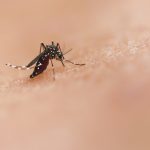Relative of the manatee, 700 new species now in danger of extinction

An international conservation organization said Friday that populations of a vulnerable species of marine mammal, numerous abalone species, and a type of Caribbean coral are now threatened with extinction.
The International Union for Conservation of Nature announced the update during Montreal’s United Nations Convention on Biological Diversity, or COP15, conference. The union’s hundreds of members include government agencies from around the world, and it is one of the most far-reaching environmental networks on the planet.
The IUCN uses its Red List of Threatened Species to categorize animals approaching extinction. This year, the union is sounding the alarm about the dugong, a large, docile marine mammal from the east coast of Africa to the western Pacific Ocean.
The dugong is vulnerable throughout its range, and now populations in East Africa have entered the red list as critically endangered, the IUCN said in a statement. In addition, new Caledonia’s populations have joined the list as endangered, the group said.
The main threats to the animal are unintentional capture in fishing gear in East Africa and poaching in New Caledonia, the IUCN said. It also suffers collisions with boats and loss of the seagrasses it eats, said Evan Trotzuk, who led the East African Red List assessment.
“Strengthening community-led fisheries governance and expanding job opportunities beyond fishing are key in East Africa, where marine ecosystems are critical to people’s food security and livelihoods,” Trotzuk said.
The IUCN Red List includes more than 150,000 species. The list sometimes overlaps with species listed in the U.S. Endangered Species Act, as in the North Atlantic proper whale case. More than 42,000 of the species on the red list are threatened with extinction, says the IUCN.
The IUCN uses several categories to describe an animal’s status, ranging from “least concern” to “critically endangered.” IUCN usually updates the red list two or three times a year. This week’s update includes more than 3000 additions to the red list. Of these, 700 are threatened with extinction.
Jane Smart, head of the IUCN Science and Data Centre, said political will would be needed to save endangered species and that the severity of the new lists may serve as a wake-up call.
“The news we usually give about this is usually grim, a little depressing, but it sparks action, which is good,” Smart said.
The pillar coral, found throughout the Caribbean, went from vulnerable to critically endangered in this week’s update. Coral is threatened by tissue loss disease, and its population has shrunk by more than 80% over most of its range since 1990, IUCN said. The IUCN lists more than two dozen Atlantic ocean corals as critically endangered.
Nearly half of corals in the Atlantic are “at high risk of extinction due to climate change and other impacts,” Beth Polidoro, an associate professor at Arizona State University and coordinator of the IUCN Red List.
Unsustainable harvesting and poaching have become threats to abalone, which is used as shellfish, IUCN said. Twenty of the world’s 54 abalone species are threatened with extinction, according to the first global assessment of the Red List species.
The organization said that threats to abalone are compounded by climate change, disease, and pollution.
“This red list update brings to light new evidence of the multiple threats that interact to the decline of life at sea,” said Jon Paul Rodriguez, chair of the IUCN Species Survival Commission.


















As we watch Goliath Grouper, Marlin, Parrotfish and turtles being killed by fisherman everyday in this country. No enforcement of any rules in this country. Sad watching all of these species vanish from the waters surrounding this island